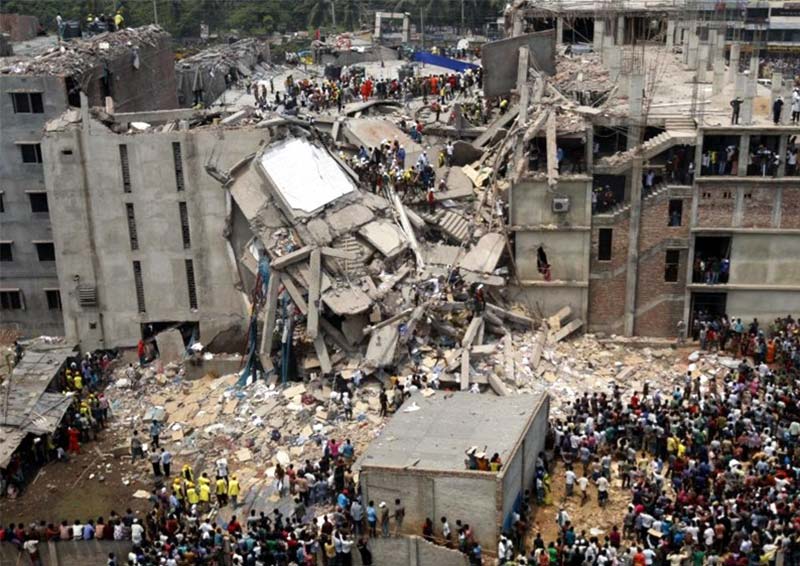Forensic engineering in developing countries
Contents |
[edit] Introduction
Civil engineers generally take a cautious approach when constructing complex systems, as any mistakes or misunderstandings of the physical world can lead to disastrous consequences, such as catastrophic failure of a building or structure. When tragic incidents like this occur, they are a lesson to be learned and passed on to others so the profession can avoid repetition of a similar disaster in the future.
It is important, then, to evolve scientific methods for investigating the causes of disasters – or other failures to perform. This branch of engineering is called 'forensic engineering'.
[edit] Looking for flaws in the system
Failures and disasters are often attributed to mistakes or deviations from the normal, committed by individuals, or to the unpredictability of the physical world (nature) itself.
Forensic engineering takes a different approach – looking at failures or disasters as a consequence of a flaw in the system of professional practice rather than as an isolated incident which could have been easily avoided. The Institution of Civil Engineers (ICE) has been advocating this approach through its journal Forensic Engineering.
[edit] A new field for developing countries
The systems of professional practice of both engineering and law are considerably different in developed and developing countries. While the practice and education of forensic engineering has progressed considerably in the developed world, it is still practically unknown in the developing world.
There is also a great deal more building taking place in developing countries and this, coupled with lack of resources means that structures and works are often more at risk of failure. All this makes it important to develop forensic engineering to suit the professional environment in these countries. As a first step, Forensic Engineering journal's editorial panel have published a themed issue featuring four full-length papers.
[edit] Increased risk in urban areas
In the first paper, 'Learning from experience to avoid collapse', Alastair Soane (2016), director for structural safety at the Institution of Structural Engineers in London, advocates that the basic principles of forensic engineering can be learnt by people in developing countries from their peers in developed countries who have gone through the learning process.
He draws attention to the fact that increased urbanisation of developing countries could lead to an increase in disasters and that there is an urgent need to take proactive steps to mitigate the risk of failures.
In the paper on 'Rapid structural assessment of garment factories in Bangladesh', Hodgson et al. (2016) give details of the assessment made on over 200 factories in the aftermath of a collapsed factory building. This paper highlights issues related to documentation and quality control which are found wanting and the consequent risks in buildings which are in use.
[edit] Identifying causes of collapse
The paper on 'Lessons from structural failures in India' by Satish Kumar (2016) first highlights the typical state of affairs in the construction industry in most countries and discusses aspects of education, professional practice, legal frameworks and implementation needed to improve the situation.
It then goes on to give several case studies where partial or total collapse occurred during or after construction. The causes of the collapses are identified and the paper tries to find systemic and policy solutions by which they can be avoided in the future.
Adding an entirely different dimension to forensic engineering is the paper by Gunn et al. (2016) on 'Aged embankment imaging and assessment using surface waves'. The development of this technique is crucial to prevent failure of old earthwork infrastructure under extreme weather conditions.
Finally, Professor Sivakumar Babu (2016) gives a briefing on forensic geotechnical engineering, outlining the steps to identify the cause of failure and how to take preventive measures.
This article was originally published here by ICE on 14 Dec 2016. It was written by Harshavardhan Subbarao.
--The Institution of Civil Engineers
[edit] Related articles on Designing Buildings Wiki
Featured articles and news
The UK's Modern Industrial Strategy: A 10 year plan
Previous consultation criticism, current key elements and general support with some persisting reservations.
Building Safety Regulator reforms
New roles, new staff and a new fast track service pave the way for a single construction regulator.
Architectural Technologist CPDs and Communications
CIAT CPD… and how you can do it!
Cooling centres and cool spaces
Managing extreme heat in cities by directing the public to places for heat stress relief and water sources.
Winter gardens: A brief history and warm variations
Extending the season with glass in different forms and terms.
Restoring Great Yarmouth's Winter Gardens
Transforming one of the least sustainable constructions imaginable.
Construction Skills Mission Board launch sector drive
Newly formed government and industry collaboration set strategy for recruiting an additional 100,000 construction workers a year.
New Architects Code comes into effect in September 2025
ARB Architects Code of Conduct and Practice available with ongoing consultation regarding guidance.
Welsh Skills Body (Medr) launches ambitious plan
The new skills body brings together funding and regulation of tertiary education and research for the devolved nation.
Paul Gandy FCIOB announced as next CIOB President
Former Tilbury Douglas CEO takes helm.
UK Infrastructure: A 10 Year Strategy. In brief with reactions
With the National Infrastructure and Service Transformation Authority (NISTA).
Ebenezer Howard: inventor of the garden city. Book review.
The Grenfell Tower fire, eight years on
A time to pause and reflect as Dubai tower block fire reported just before anniversary.
Airtightness Topic Guide BSRIA TG 27/2025
Explaining the basics of airtightness, what it is, why it's important, when it's required and how it's carried out.
Construction contract awards hit lowest point of 2025
Plummeting for second consecutive month, intensifying concerns for housing and infrastructure goals.
Understanding Mental Health in the Built Environment 2025
Examining the state of mental health in construction, shedding light on levels of stress, anxiety and depression.























